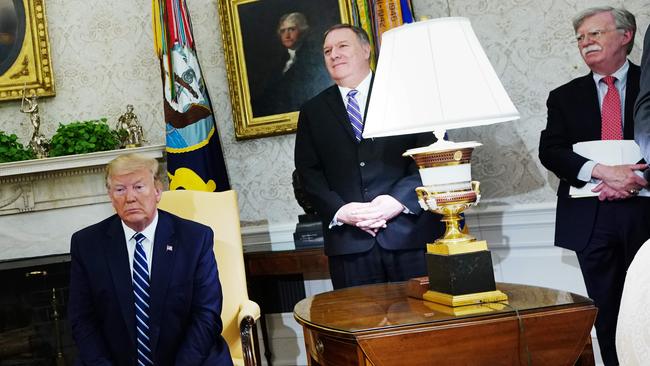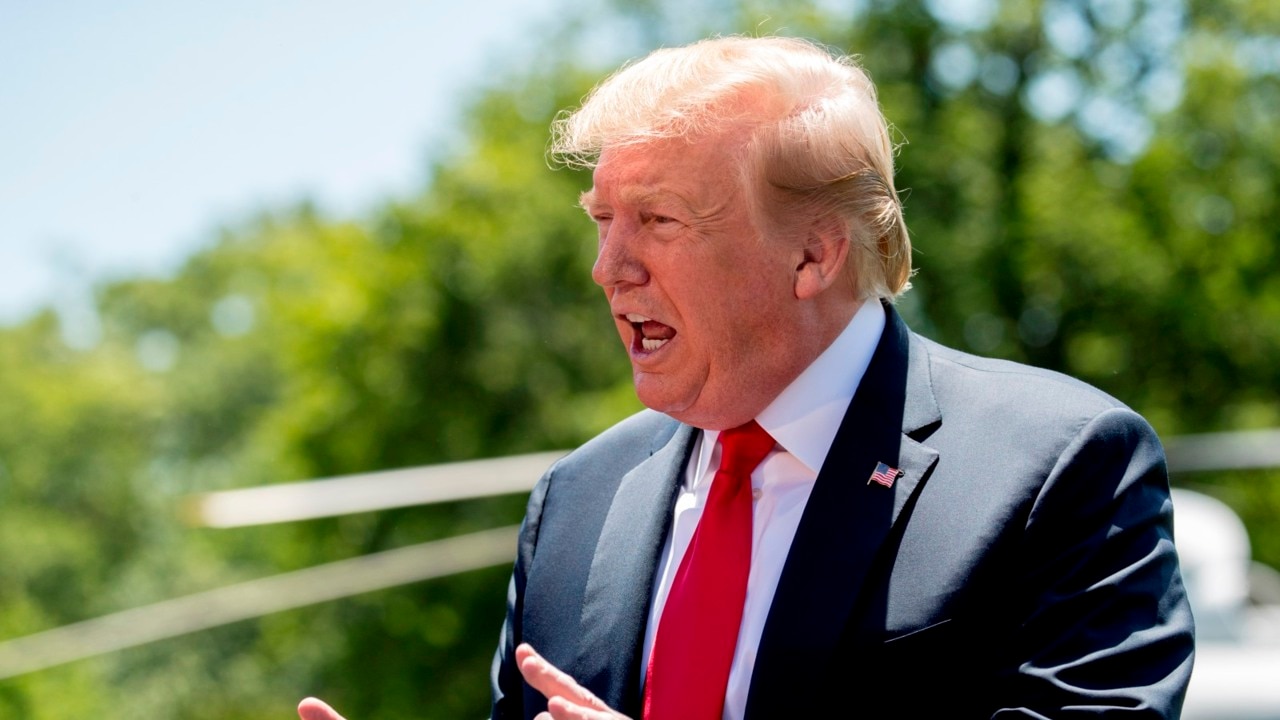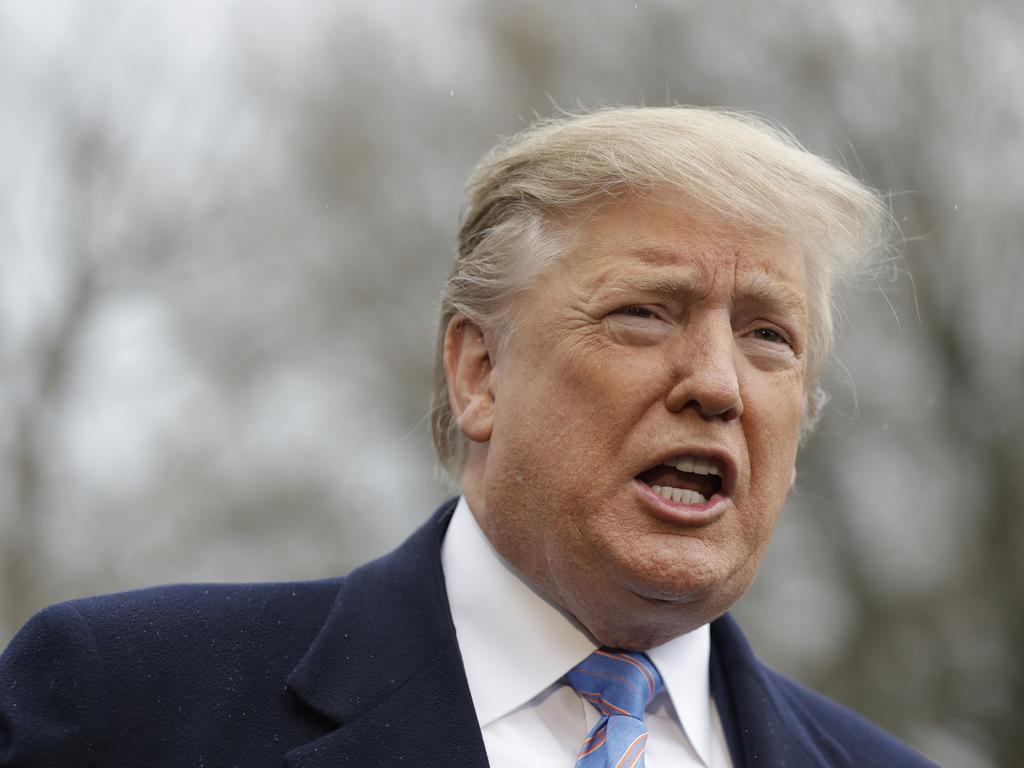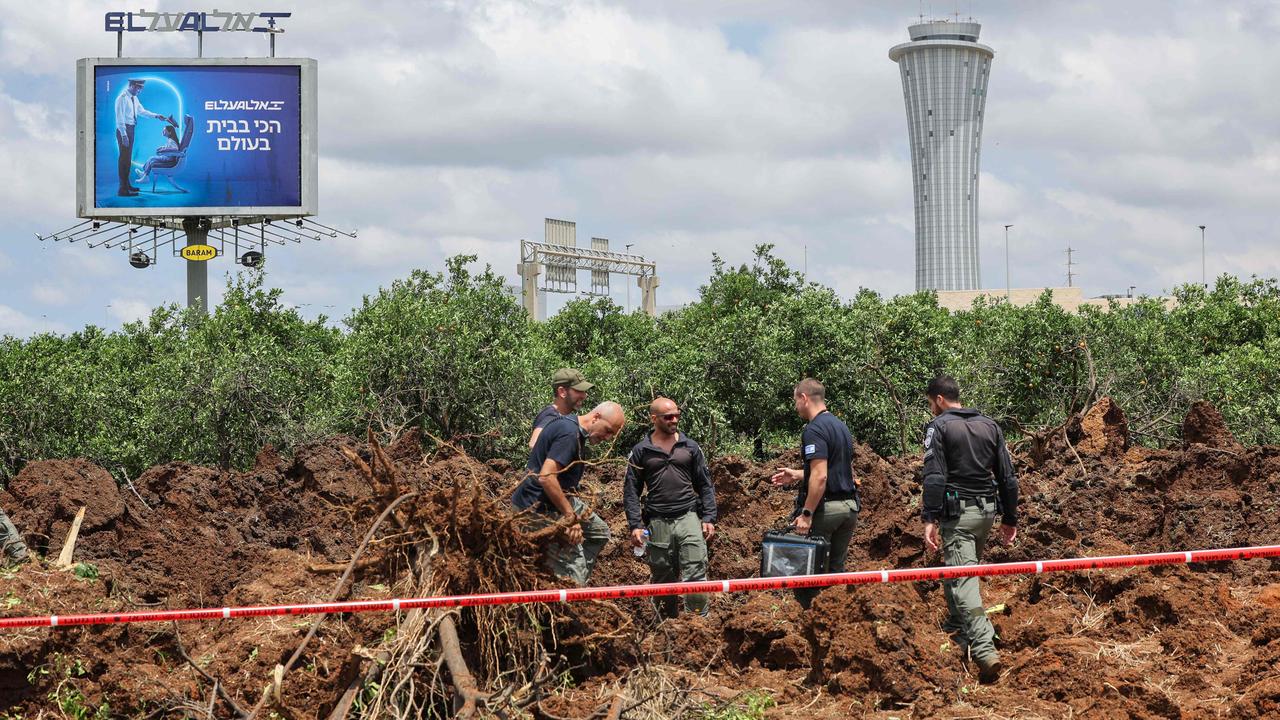Trump says he’s ‘in no hurry’ to confront Iranians
The US President tweets he called off a retaliatory strike after being told 150 people would be killed.

US President Donald Trump says he called off a retaliatory military strike on Iran just 10 minutes before its planned start after learning 150 people would be killed, saying such an action would have been disproportionate to Iran’s downing of an unmanned US surveillance drone.
“We were cocked & loaded to retaliate last night on 3 different sights [sic] when I asked, how many will die,” Mr. Trump wrote on Twitter on Friday. “150 people, sir, was the answer from a General.”
The President said he was in “no hurry” to confront Iran but said the country “can NEVER” have nuclear weapons.
Expanding on his decision in an NBC interview later on Friday US time, Mr Trump said: “I thought about it for a second, and I said, ‘You know what, they shot down an unmanned drone. And here we are sitting with 150 dead people … And I didn’t like it. I didn’t think it was proportionate.”
Iran also said it had deliberately avoided casualties. Officials in Tehran said on Friday that while Iranian forces shot down the unmanned US spy plane, they avoided firing on a manned US aircraft flying nearby.
US officials did not immediately respond to questions about the Iranian assertion, or about whether there was a manned US aircraft in the vicinity.

Other world leaders seized on the momentary easing in tensions to call for talks. “We must absolutely avoid escalation,” French President Emmanuel Macron said during a European Commission gathering in Brussels. “So I invite all the parties involved to reason, to de-escalation and now to discussion.”
Mr Macron said next week’s summit of leaders from the Group of 20 leading nations in Japan offers a chance to “try to build some concrete diplomatic solutions to this situation, which can’t continue as it is because there is too much instability and tension”.
German Chancellor Angela Merkel told reporters that Berlin hoped for “a political solution of a very tense situation”.
Iran’s attack on the drone capped an expanding confrontation over the past week that also involved US accusations that Iran had attacked six commercial ships with mines and was responsible for rockets fired at US and Western targets throughout the region.
An administration official said on Friday that the drone’s downing convinced Mr. Trump that Iran was mostly limiting its attacks to US technology and wasn’t targeting troops, leading to his decision to call off the strike.
That approach would represent a dramatic departure from intelligence reports in the past month that showed Iran was considering a potential attack on US forces in Iraq, the administration official said.
“The moment one American life is harmed, it will be met with an overwhelming response,” the official said.
Mr Trump’s pullback came at the end of a day during which the US edged closer to military confrontation, as the President charged that Tehran had made “a very big mistake” in shooting down the unmanned drone, a sophisticated aircraft worth $US130 million ($187m).
The drone was downed by an Iranian surface-to-air missile battery, prompting a sharp disagreement between the two countries over whether the US aircraft was in international airspace, beyond the 12-nautical-mile (22-kilometre) zone comprising Iranian airspace.
Iran says the drone was eight nautical miles from its shoreline; the US argues the aircraft was more than 18 nautical miles from land.
Mr Trump repeatedly has shown during his 29 months in office that, contrary to his reputation as a provocateur in domestic politics, he is more cautious on military matters. He frequently has told aides that his administration must be willing to finish whatever military conflict it starts.
The President, who once described Syria as “sand and death”, privately has indicated that he sees little in the Middle East that is worth the gamble of military action. Last year, the President expressed certainty to his team that his decision then to launch missiles into Syria wouldn’t seriously escalate.
But he was less confident on Thursday night about that outcome with Iran, according to White House officials.
On Thursday, military options to strike Iranian assets were pushed by John Bolton, Mr Trump’s national security adviser, these officials said.
Secretary of State Mike Pompeo, while in favour of a strike, also was more understanding of reservations expressed by Defence Department officials, according to administration officials. Vice-President Mike Pence supported those plans, but also agreed with the President’s decision to abort them, the officials said.
“There was complete unanimity amongst the President’s advisers and DoD leadership on an appropriate response to Iran’s activities,” an administration official said. “The President made the final decision.”
Iran said on Friday that it had warned the US spy drone to turn around before shooting it down. It also said another spy plane with around 35 crew members was flying near the drone but that the country chose not to target it.
The downing of the drone on Thursday came after Iran said the aircraft had flown into Iranian airspace with transponders turned off. The commander of Iran’s Revolutionary Guard Corps aerospace force, Brigadier General Amir Ali Hajizadeh, said that Iran warned the drone four times and that the drone would have transmitted the warnings to its “central stations”.
“The last warning by Iran’s air defence was given at 03:55 Thursday morning to the US spy drone,” Mr Hajizadeh said on state television. “Because they ignored our warnings, the US drone was downed at 04:05.”
The US. has insisted the drone was in international airspace.
The incident has set off a scramble to retrieve the parts of the spy plane. Iran unveiled on Friday what it said was debris from the downed drone collected off the shore of Kuh Mobarak in Iran.
“This is in fact evidence of the US air invasion of our territorial waters,” said Mr Hajizadeh, adding that the parts had been sent to Tehran.
The RQ-4A Global Hawk undertakes real-time intelligence, surveillance and reconnaissance missions over ocean and coastal regions, said Captain Bill Urban, a spokesman for US forces in the Middle East.
Manufactured by US-based Northrop Grumman Corp., the $US130m craft can fly for over 30 hours at a time and has the same wingspan as a Boeing 737 jet.
Mr Trump on Friday spoke with Saudi Arabian Crown Prince Mohammed bin Salman, the White House said. They discussed Middle East stability, the global oil market and Iran’s “escalatory” behaviour, the White House said.
The Wall Street Journal
The Times reports: The US has an armada of warships in the Gulf in preparation for a confrontation. Every day fighter jets and reconnaissanceaircraft fly over the waterway, careful to keep clear of Iranian airspace.
The carrier USS Abraham Lincoln, backed by a guided-missile cruiser, three guided-missile destroyers, an amphibious warship and at least one submarine armed with Tomahawk cruise missiles, represents America’s frontline strike force in the Gulf.
The carrier is supported by four B-52H bombers and other aircraft based in Qatar, Kuwait and the United Arab Emirates.
Iran has a large inventory of surface-to-air missiles, as proved by the successful attack on the US Air Force Global Hawkdrone.
Douglas Barrie, senior fellow for military aerospace at the International Institute for Strategic Studies, said that if the drone had been operating at its normal altitude of 40,000 feet (12.2 kilometres), the Iranians would have needed to use either an SA-20 or a Sayyad-2 or Sayyad-3 missile to have the required range.
The Iranians have many old Russian surface-to-air missiles. Mr Barrie said, however, that Iran faced challenges to update them “because of sanctions and a lack of cash”.
Nevertheless, Tehran claims to have some advanced weapons, such as an anti-ship ballistic missile, the Khalij Fars, with a range of 186 miles (300km). It also has 336 aircraft but many are out of operation.
The latest clash is not the first. In 1979 52 US diplomats were held hostage in Tehran for 444 days. Three years later the Iranians were blamed for two suicide bomb attacks by Hezbollah in Beirut, which killed 258 Americans. In 1988, half of Iran’s navy was sunk or severely damaged after a US destroyer was hit by a mine.




To join the conversation, please log in. Don't have an account? Register
Join the conversation, you are commenting as Logout